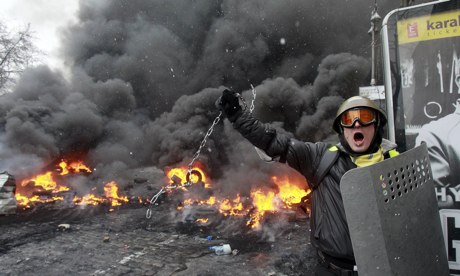aeromagazine | The First Amendment of the US Constitution specifies that Congress “shall make no law … abridging the freedom of speech.” In fairness, Congress has made no such law. The executive branch is simply stating that it will invoke its power to censor by fiat in collaboration with social media companies, on the pretext of a national emergency.
Given that the federal government enjoys the cooperation of the vast majority of media outlets, the fact that competing social media narratives are sufficient to prevent them from being able to convince the nation that their message is correct represents a significant problem with the message itself, the effectiveness of its communication or the credibility of their sources.
Of these three factors, credibility seems especially weak. Since the start of the pandemic, health leaders have made definitive statements that have subsequently needed to be reversed. First, early in 2020, they insisted the wearing of masks by the public was unnecessary, as it was not believed that the virus spread via airborne transmission. That was incorrect. The hypothesis that the origin of the virus was a lab leak from the Wuhan Institute of Virology was labelled a conspiracy theory, but has now been deemed as likely as a natural origin. In late March, the current CDC cirector, Rochelle Walensky, announced that vaccinated individuals were unable to carry the virus, even though existing studies confirmed that they could both carry and spread it. The CDC later awkwardly walked these comments back. In May it was announced that vaccinated individuals were free to roam unmasked in most settings because they would not spread or contract the virus except in the rarest of circumstances. This directive has now been reversed again due to the rise of the Delta variant, as data have shown that vaccinated individuals may have the same viral load as the unvaccinated, and may indeed be able to spread it to others. The CDC says that vaccinated individuals should return to masking indoors. Even though some of these reversals were due to changing circumstances, the ongoing back-and-forth leads many to question the credibility of the messengers.
It has also become clear that leaders are disseminating misinformation—or, in some cases, disinformation—on behalf of those who know the truth but are making statements to the contrary.
In a 21 July 2021 CNN Town Hall, President Biden insisted: “You’re not gonna get Covid if you have these vaccinations.” This was a completely inaccurate statement. Vaccinated people have contracted Covid since the vaccinations began, and this trend is increasing now that the Delta variant is the dominant viral strain. Data from the Israeli Ministry of Health reveal that, at five months and six months after the second vaccine dose, individuals are only protected from symptomatic Covid at levels of 44% and 16% respectively. Meanwhile, a new study from Israel indicates that protection from serious disease has fallen to 80%.
It may be that this misinformation was conveyed accidentally as a result of inelegant delivery by the president. But this was a very dangerous statement, as it promoted a false impression that the vaccines are completely protective, and was likely to make many question and potentially resist the new announcement from the CDC that vaccinated people should wear masks indoors.
The CDC director declared that this was a pandemic of the unvaccinated—and was soon echoed by President Biden. A large number of health leaders and media contributors have continued to parrot this phrase. But case data from Israel, the UK and many other countries prove that vaccinated individuals are being significantly impacted. Israel recently announced that 60% of its hospitalised Covid patients were fully vaccinated. The newest Public Health England technical report reveals that 25% of Delta hospitalisations and 54% of Delta deaths have occurred in the fully vaccinated. Iceland has achieved a vaccination rate of almost 90% among adults, but still needed to reinstate public health measures due to a surge in Delta infections. Now that the Delta variant has taken hold in the US, there have been numerous instances of vaccinated individuals being infected, including the notable breakthrough infections in Provincetown, Massachusetts that were a central factor prompting new CDC guidance on indoor masking. It is clear that the Delta variant has produced a much more complicated landscape, in which merely the amount of vaccine that has been administered is a less significant data point. In short, it is false to claim that the pandemic affects only the unvaccinated.
In addition to being inaccurate, the narrative that the pandemic now only affects the unvaccinated has created division and hostility between different groups, which is extremely unhelpful given the many cases of shootings in the US, as well as violent outbursts in public spaces including airlines. I have seen vitriolic statements on social media by vaccinated individuals who are blaming the unvaccinated for the Delta variant, even though it was discovered in autumn of last year, before vaccinations were available to the general public. Even some in the media have engaged in blaming the unvaccinated. CNN host John Berman insisted: “If the unvaccinated aren’t to blame, who is?” We urgently need to promote a climate in which people work together rather than being turned against one another.
Some leaders have suggested that increased vaccination levels will arrest the surge in the Delta variant. After the second dose, it takes 35 days with Pfizer or 42 days with Moderna to achieve fully vaccinated status. It is obvious that new vaccinations, which take more than a month to provide full protection, cannot prevent a viral surge that is presently underway. Additional vaccines may indeed help more people to have better health outcomes if they were to become infected—but that is an entirely different claim.











